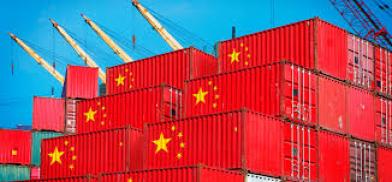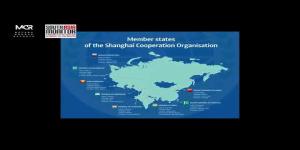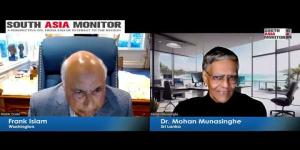Tariff and trade wars: India needs a new and different approach to China
The world, including the USA, too can’t suppress or coerce China militarily or with sanctions and tariffs. The raw fact is that China unilaterally dominates the world supply chain. To be counted, India needs to step up and become relevant in this supply chain

Geopolitical recession and potential trade wars will reflect on the economic progress of India in the near term. A geopolitical recession is not just the result of market or economic issues but refers to an economic downturn that is largely driven or influenced by political factors, typically related to international relations, military trade wars or sanctions, conflicts, and the global political landscape in the wake of geopolitical tensions. In essence, a geopolitical recession happens when the global economy is impacted by these international political and diplomatic challenges, leading to decreased economic activity, reduced trade, and often a contraction in global or regional GDP.
Ongoing conflicts affecting economy
It was clear from the start that Putin’s war in Ukraine would be a global economic disaster. Ukraine was once one of the poorest Soviet republics. The war is undoing the significant progress since its independence in 1991, adding catastrophically to its economic woes. Ukraine’s economic output is now at a fraction of its pre-war levels. In the first year of the conflict, the country lost 30-35% of GDP.
The sanctions are certainly yet to stop Russian aggression. Nor have they brought Russia to the negotiating table. Some commentators believe that they have had, at most, a very limited impact on the Russian economy. On the contrary, it is evident the conflict has exacerbated global food insecurity. Nearly 258 million people in 58 countries/territories were in food crisis or moderate-to-severe acute food insecurity in 2022 – up from 193 million in 53 countries/territories in 2021. The Russia-Ukraine conflict has significantly disrupted the global fossil fuel energy trade, primarily by causing a major decrease in Russian fossil fuel exports to Europe due to sanctions, leading to sharp price increases for oil and natural gas, and forcing European countries to seek alternative energy sources to reduce their dependence on Russian imports; this has also impacted energy security worldwide.
Pakistan
Pakistan continues to face multiple sources of internal and external conflict. Extremism and intolerance of diversity and dissent have grown, fueled by a narrow vision of Pakistan’s national identity, and are threatening the country’s prospects for social cohesion and stability. The inability of state institutions to reliably provide peaceful ways to resolve grievances has encouraged groups to seek violence as an alternative. With the country’s ailing economy reliant on external credit and security conditions worsening in many border provinces
Bangladesh
The dramatic collapse of former Bangladesh prime minister Sheikh Hasina’s government has created extraordinary churn and uncertainty at home, in the region, and geopolitically. The most important questions are domestic. The aftermath of political revolutions can go in numerous directions, from civil war to the consolidation of a new and broadly accepted political system, and everything in between. The good news is that Bangladesh is better positioned for stability than many other post-regime change cases. Labor mobilization, which has been a regular occurrence in recent months, is generally not a source of political breakdown in these cases. But its anti India stance does noy bode well for its future and peace in the neighborhood.
Myanmar
Having gained steady momentum over the past two years, the resistance reached a turning point in 2024, posing an existential threat to the regime. Operation 1027, launched by a coordinated ethnic armed organizations (EAOs) on China’s border in late 2023, peaked in 2024, transforming the conflict’s trajectory into a Nationwide escalation came as a set back to the military’s inflicting the worst losses in its history. China’s gambit to support the military temporarily slowed the resistance’s momentum but failed to reverse the current trend of humiliating military losses. The conflict is likely to escalate in urban areas and central Myanmar, particularly in Mandalay, Yangon, Irrawaddy and Bago regions.
Syria
It has been more than a month since Bashar al-Assad’s regime collapsed in Syria, marking the end of a 13-year-long revolution. This event brought hope to millions of Syrians who have long struggled for justice, freedom and dignity. In just a few weeks, a lot has changed. After being prevented from having a presence in most of Syria for years, Syria Relief/Action for Humanity, finally established a formal office in Damascus. But the situation there is yet fluid with a threat of ISIS rearing its head again. It is expected that Turkey may have an overwhelming influence on where Syria is headed,
Gaza
On 19 January a ceasefire between Israel and Hamas came into effect. A ceasefire is not the same as an armistice, which is a formal agreement to permanently end all military operations in a conflict. Armistices do not establish peace but rather end fighting so involved parties can commit to resolving their differences through negotiations. The ceasefire it seems is very fragile and may largely depend on how long Iran can be suppressed, with tensions between Israel and Iran still simmering.
China and world trade
Here we will briefly examine US-China trade and India-China trade which will directly affect India:
USA-China
The Indo-US trade war stands out as among the largest and most abrupt changes in US trade policy history, particularly when juxtaposed against the leading role historically played by the US in driving tariff reductions around the globe. President Trump indeed held back from enacting a national economic emergency and countrywide tariffs on China and the rest of the world. This rational approach from both sides at the start of Trump’s second term opens up the room for negotiations and avoids an immediate escalation of friction.
Between US-China, a collision course is still highly possible, or is there room for cooperation? These are key questions looking ahead at Trump's highlighted China priorities, examining the likelihood of both confrontation and cooperation in key categories. For all his rhetoric, the threatened 60% tariff on China during campaigning has suddenly become 10% within two days of DJT assuming office. Donald J Trump is also fully aware that the USA too can’t suppress or coerce China in any way.
And let's not forget that the landscape in China has changed since the first trade war. What happens between the US and China will affect trade of all nations with those countries.
India-China
Between 1962 and 1990, India was really grappling with the idea of China. In early 1990s it became clear to India that China can’t be suppressed or coerced but has to be managed. Notwithstanding known and unknown developments along LAC, it has been all along and it will be in the future, about managing China. As of 2023, India had a significant trade deficit with China, reaching around $83.36 billion, with India importing much more from China than it exports to the country; the deficit is only increasing since. This also makes China India's largest trading partner despite the deficit. In the face of this, LAC is less impactful. China knows it but needles India there merely for political reasons.
Though a bit late, the world has also come to terms that China is powerful. The world, including the USA, can’t suppress or coerce China militarily or with sanctions and tariffs. The raw fact is that China unilaterally dominates the world supply chain. To be counted, India needs to step up and become relevant in this supply chain
It is time India changes its approach with China and take it beyond the LAC. China is also aware of this and is bound to play along.
(The author is an Indian Army veteran and a contemporary affairs commentator. The views are personal. He can be reached at kl.viswanathan@gmail.com )
meilleur casino en ligne
Truly tons of helpful knowledge!
meilleur casino en ligne
Seriously many of helpful facts.
casino en ligne francais
Whoa a good deal of excellent info!
casino en ligne fiable
Fine facts Kudos!
meilleur casino en ligne
Nicely put, Thanks a lot!
casino en ligne
Great information, Many thanks!
casino en ligne
You reported this exceptionally well.
casino en ligne
Nicely put. Thanks.
casino en ligne
Very good facts. Thanks a lot!
casino en ligne









Post a Comment